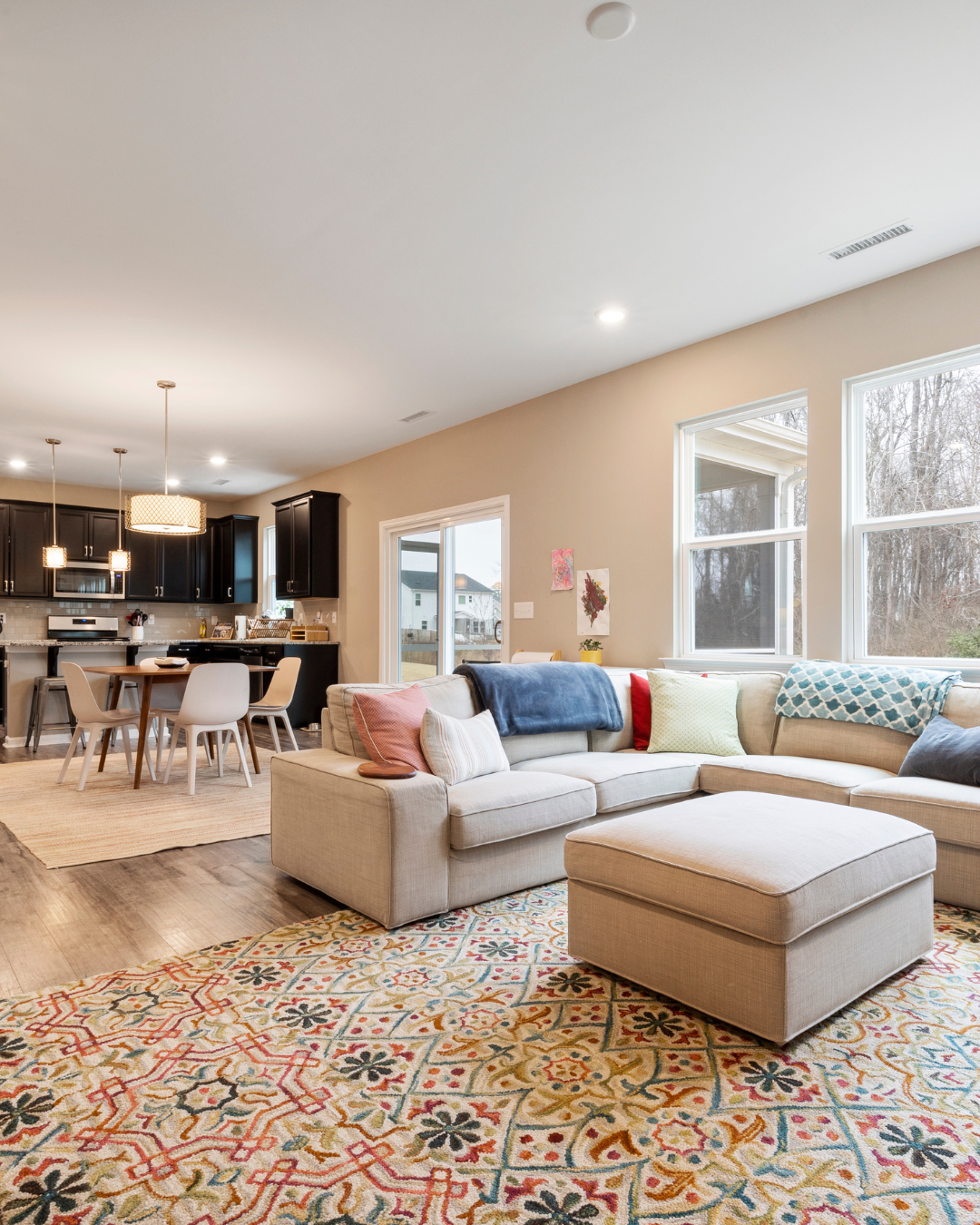How to Add Texture to Your Home Décor: Tips for a Stylish and Inviting Atmosphere

Incorporating texture into home décor significantly enhances the visual appeal and invites a tactile experience. Layering different materials, such as soft fabrics, smooth metals, and rough woods, creates depth that transforms a room from ordinary to extraordinary. This simple yet effective approach can elevate interior design, making spaces feel more inviting and dynamic.
Textures can be introduced through various elements, including textiles, wall finishes, and decorative accessories. Rugs, cushions, and throws add warmth and comfort, while textured wall surfaces like brick or plaster add character and interest. Choosing a mix of contrasts not only creates visual harmony but also encourages the exploration of spaces.
Understanding the importance of texture allows for more engaging and personalised home décor. By focusing on the interplay of materials, one can curate a living space that not only looks stylish but also reflects individual tastes and preferences. Experimenting with texture offers an opportunity to breathe new life into any setting, making it truly unique.
Understanding Textures in Interior Design
Textures play a crucial role in enhancing the depth and visual interest of a space. By incorporating various textural elements, designers can create a more inviting and dynamic environment.
The Role of Texture in Creating Depth and Visual Interest
Texture adds layers to a room, making it feel more complex and engaging. Smooth surfaces can contrast with rough materials to create an appealing visual balance. This contrast helps direct the eye and encourages exploration of the space.
Adding texture through different materials can also influence light and shadow. For example, a shaggy rug can soften a hard floor surface. This interplay of textures enhances the overall aesthetic and can make an area feel warmer and more welcoming.
Incorporating different textures can also evoke specific emotions. Soft fabrics like velvet may invite relaxation, while sleek metals can create a modern vibe. By thoughtfully selecting these materials, one can manipulate the atmosphere of the room.
Types of Textures to Consider
When selecting textures, various natural materials and finishes can significantly impact design. Here are some common types to consider:
- Textile: Fabrics such as linen, silk, and cotton can add softness.
- Wood: Both polished and raw wood can introduce warmth and organic appeal.
- Stone: Granite or marble slabs offer a cool, sophisticated touch.
- Metals: Metals like brass or steel provide a sleek, contemporary look.
Mixing these textures creates a layered effect. For instance, pairing a woven basket with a smooth glass vase introduces visual contrast. Using an array of textural elements promotes an inviting atmosphere, encouraging interaction and engagement within the space.
Adding Texture Through Soft Furnishings
Incorporating soft furnishings into home décor significantly enhances texture and warmth. This section explores layering textiles, selecting upholstery, and choosing window treatments to create inviting and tactile spaces.
Layering Textiles with Throws, Cushions, and Rugs
Layering is a crucial technique for adding depth to a room. By combining different materials such as knit throws, velvet cushions, and sheepskin rugs, one can achieve a harmonious blend of textures.
- Throws: Opt for a crochet throw or a chunky knit for a tactile contrast.
- Cushions: Use a mix of sizes and shapes; a few bold patterned cushions can energise a neutral sofa.
- Rugs: Consider placing a small, plush rug over a larger flat weave for an added visual layer.
The interplay of these textiles creates a dynamic look while inviting comfort.
Choosing Upholstery for Furniture Texture
Upholstery plays a significant role in the tactile quality of furniture. Selecting materials such as velvet or faux fur can elevate a piece from ordinary to exceptional.
- Velvet: Known for its luxurious feel, it works well for chairs and sofas.
- Faux Fur: Adds an element of warmth and cosiness, perfect for accent pieces.
- Contrasting Fabrics: Mixing textures between seat cushions and backrests enhances dimensionality.
These choices can dramatically influence the room’s atmosphere, creating an inviting environment.
Window Treatments: Curtains and Blinds
Window treatments are vital for controlling light while adding texture. The right curtains or blinds can transform the room’s feel.
- Curtains: Heavier fabrics like linen or velvet offer elegance and warmth. Lighter materials can create an airy feel.
- Blinds: Wooden or faux wood blinds provide a contrasting texture, suitable for a modern aesthetic.
- Layering Options: Combining sheer curtains with heavier drapes allows for versatility in light control and aesthetics.
Each choice in window treatments significantly contributes to the overall décor, enhancing both style and comfort.
Incorporating Natural Elements and Materials
Integrating natural elements into home décor enhances warmth and character. Three effective methods include using wooden textures, incorporating plants, and utilising natural decorative items.
Wood Textures: From Wooden Floors to Rough Wood
Wooden floors provide a timeless foundation in any space. They add depth and richness, available in various finishes such as polished oak or rustic pine. Rough wood elements, like wooden beams or reclaimed timber, introduce an organic feel. These can feature in furniture pieces or accent wall panelling, creating a striking visual contrast with smoother surfaces. Combining different wood finishes can enhance interest. For example, pairing dark wooden floors with lighter furniture establishes balance and harmony.
Adding Greenery with Plants and Natural Fibres
Incorporating plants brings life into a room. They improve air quality and add vibrant colour. Ideal options include ferns, succulents, and snake plants, which require minimal maintenance.
Natural fibres complement this greenery effectively. Materials like sisal and jute can be used for rugs or baskets, working well with potted plants. Sisal rugs, for instance, offer texture and durability, making them ideal for high-traffic areas. Placing plants in decorative pots made from natural materials, such as clay or terracotta, enhances the earthy aesthetic.
Utilising Natural Decorative Items
Natural decorative items can anchor a design scheme. Items like rattan baskets add storage while introducing texture. These baskets can be used for both decorative and practical purposes. Vases made from ceramic or glass can showcase fresh flowers or simply stand alone as art pieces. Choosing natural materials enhances their appeal and integrates them seamlessly into the décor. Incorporating these elements creates a cohesive look, making spaces feel inviting and grounded.
Enhancing Textures with Lighting and Colour
Effective use of lighting and colour significantly elevates the textures in home décor. This section focuses on utilising strategic light fixtures and colour schemes that enhance and complement various textural elements for a dynamic visual experience.
Strategic Light Fixtures to Highlight Textures
The choice of light fixtures plays a critical role in accentuating textures. Spotlights can be directed toward textured walls or surfaces, creating interesting shadows that emphasise their depth. Table lamps with unique bases or shades contribute to both functionality and style. Pendant lights can serve as statement pieces while casting light to accentuate architectural elements or textured features like wood or stone.
Layering light is also essential. Combining ambient, task, and accent lighting creates a fuller perception of space, drawing attention to various surfaces and materials. Different light temperatures may also affect how textures are perceived—warmer lights can soften hard surfaces, while cooler lights can enhance sleek, modern textures.
Colour Schemes to Complement Textural Elements
Colour choice can influence how textures are perceived in a room. A monochromatic colour scheme often enhances texture by allowing varying shades of one colour to create depth and interest. For a bolder approach, using a complementary colour palette can make textures stand out even more. For example, pairing earthy tones with vibrant accents underscores natural materials like wood or stone, while cooler hues can enhance reflective surfaces.
Consider using neutral colours as a backdrop, allowing textured elements to be the focal point. Textured fabrics like velvet or linen can seamlessly blend with bold wall colours, while strategically placed accessories can draw the eye and create a harmonious space.
Creating Contrast with Mix and Match Techniques
Mixing and matching textures creates a striking visual contrast. This approach involves choosing items with different tactile qualities, such as pairing a polished metal lamp with a soft wool throw. Combining hard and soft textures encourages interaction within the décor. For example, a rugged wooden table can be complemented by smooth ceramic vases or plush cushions, creating a balanced aesthetic.
Varying shades within the same colour family can further enhance this contrast while remaining cohesive. Mix and match items like patterned rugs with solid-coloured furniture to maintain a dynamic yet inviting space, emphasising both colour and texture harmoniously.


